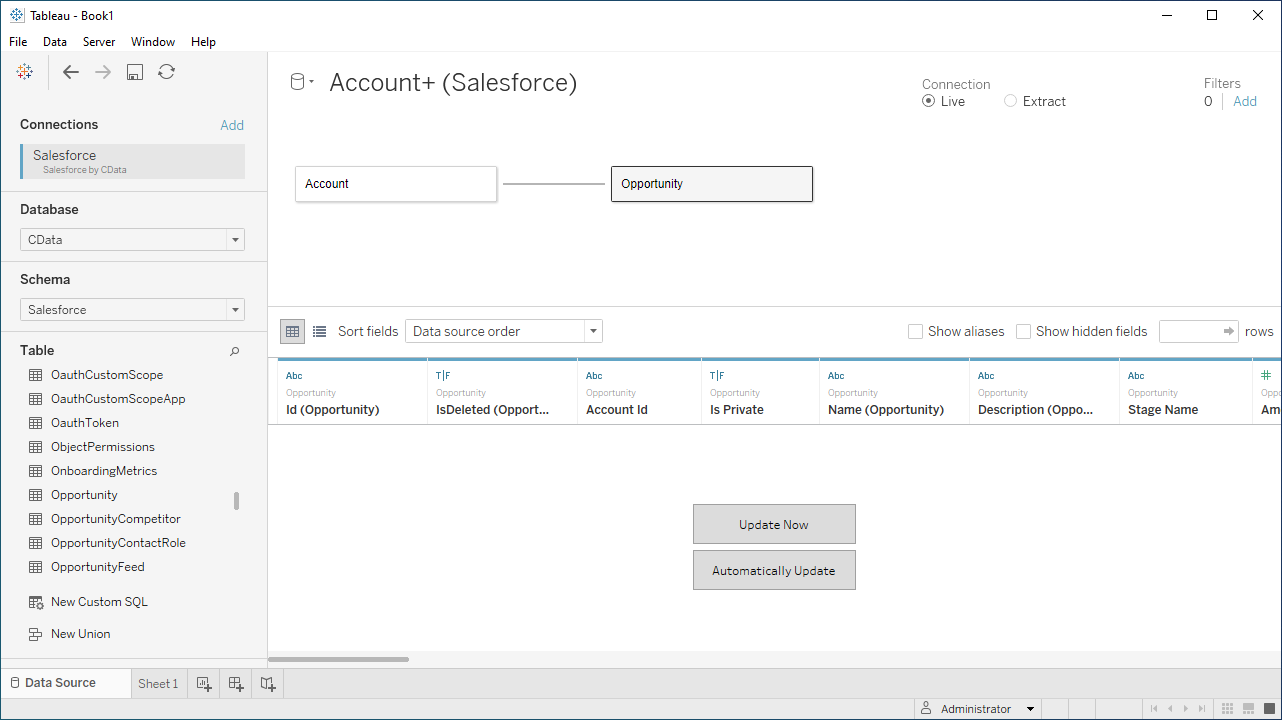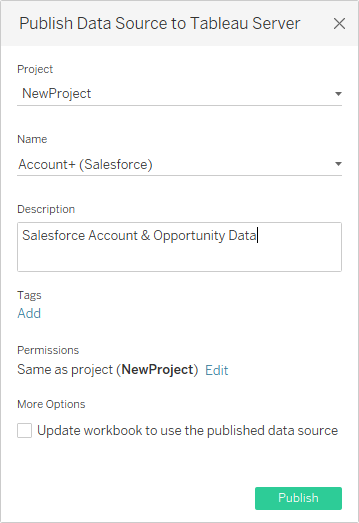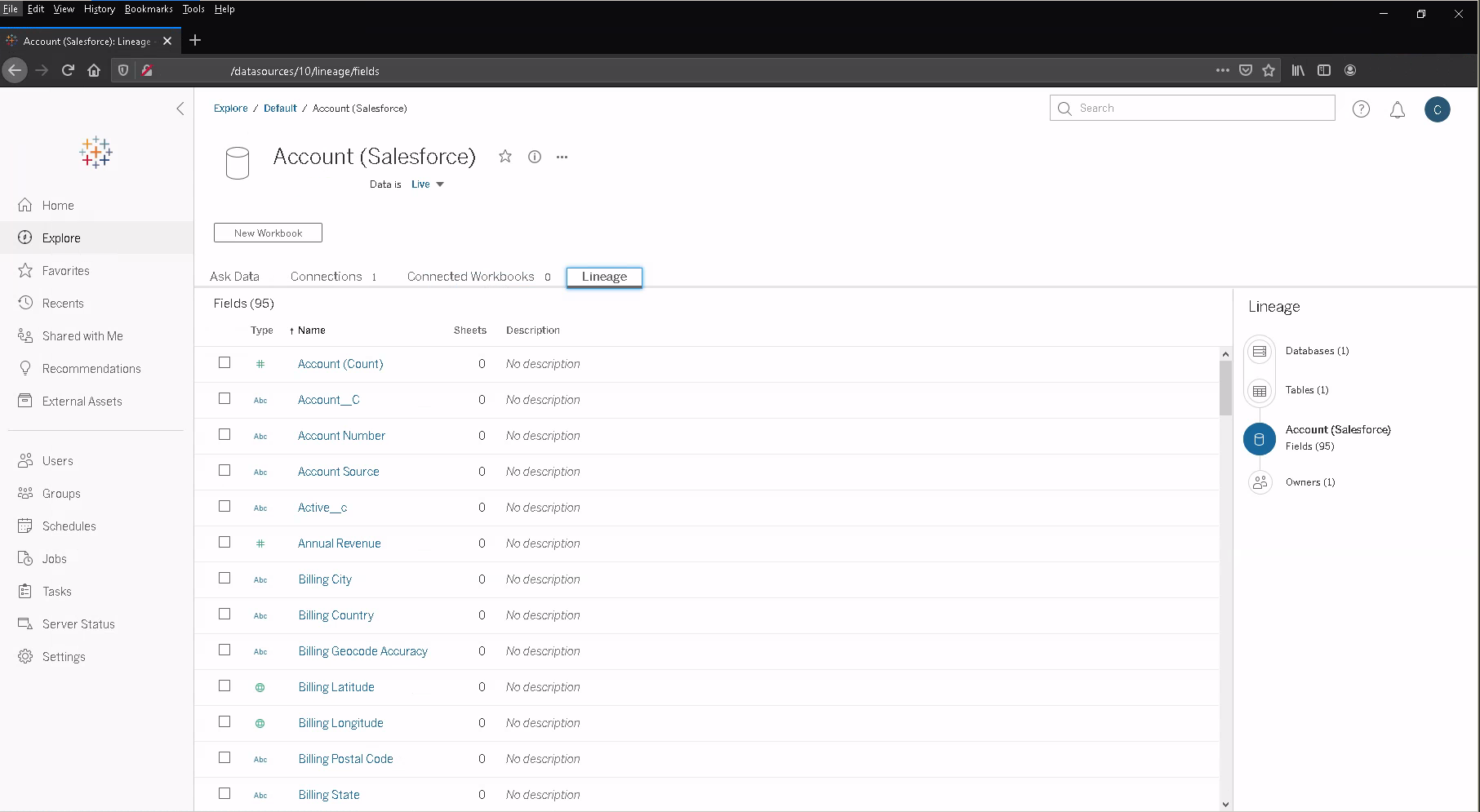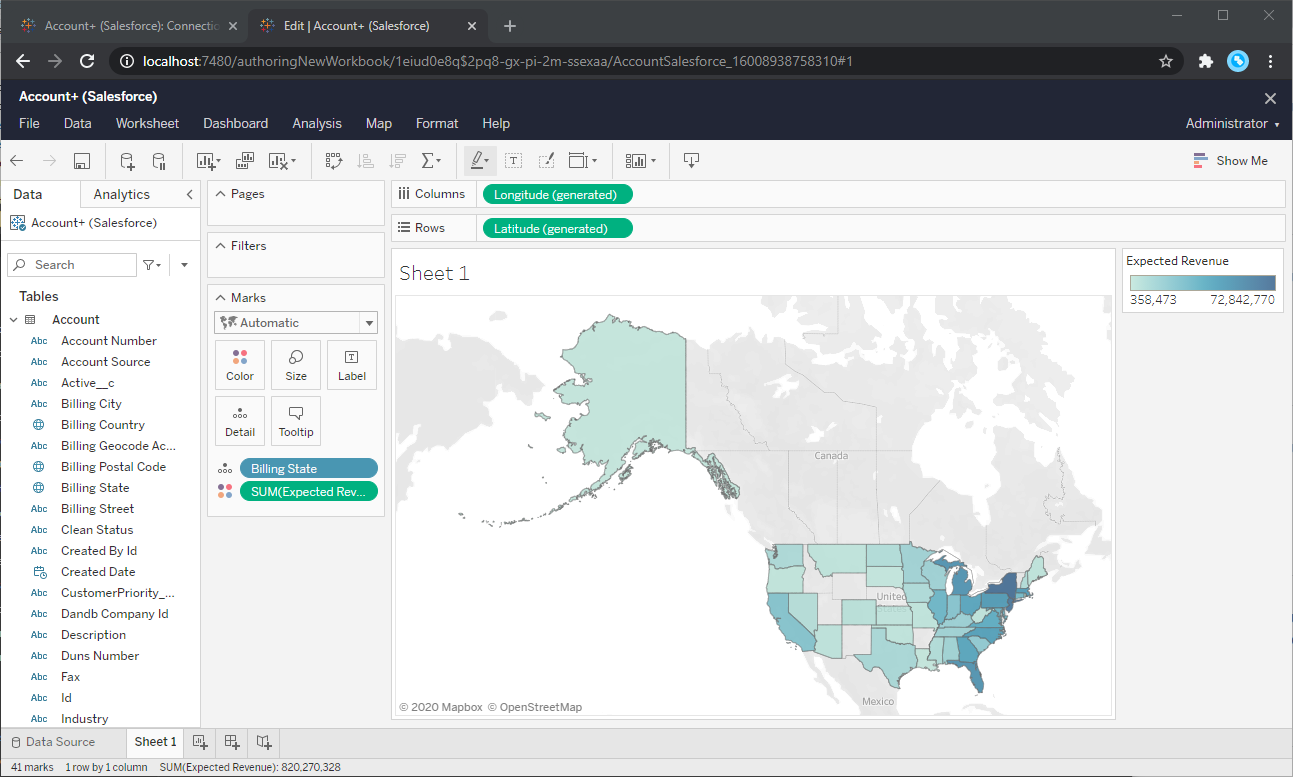Model Context Protocol (MCP) finally gives AI models a way to access the business data needed to make them really useful at work. CData MCP Servers have the depth and performance to make sure AI has access to all of the answers.
Try them now for free →Publish NetSuite-Connected Dashboards in Tableau Server
Use CData JDBC drivers and Tableau Server to visualize live NetSuite data.
Tableau Server is a visual analytics platform transforming the way businesses use data to solve problems. When paired with the CData JDBC Driver for NetSuite, you get access to live NetSuite data within Tableau Server. This article shows how to connect to NetSuite in Tableau Desktop, publish a Data Source to Tableau Server, and build a simple chart from that data.
The CData JDBC Driver enables high-speed access to live NetSuite data in Tableau Server. Once you install the driver, you simply authenticate with NetSuite and you can immediately start building responsive, dynamic visualizations and dashboards. By surfacing NetSuite data using native Tableau data types and handling complex filters, aggregations, & other operations automatically, CData JDBC Driver grants seamless access to NetSuite data.
About NetSuite Data Integration
CData provides the easiest way to access and integrate live data from Oracle NetSuite. Customers use CData connectivity to:
- Access all editions of NetSuite, including Standard, CRM, and OneWorld.
- Connect with all versions of the SuiteTalk API (SOAP-based) and SuiteQL, which functions like SQL, enabling easier data querying and manipulation.
- Access predefined and custom reports through support for Saved Searches.
- Securely authenticate with Token-based and OAuth 2.0, ensuring compatibility and security for all use cases.
- Use SQL stored procedures to perform functional actions like uploading or downloading files, attaching or detaching records or relationships, retrieving roles, getting extra table or column info, getting job results, and more.
Customers use CData solutions to access live NetSuite data from their preferred analytics tools, Power BI and Excel. They also use CData's solutions to integrate their NetSuite data into comprehensive databases and data warehouse using CData Sync directly or leveraging CData's compatibility with other applications like Azure Data Factory. CData also helps Oracle NetSuite customers easily write apps that can pull data from and push data to NetSuite, allowing organizations to integrate data from other sources with NetSuite.
For more information about our Oracle NetSuite solutions, read our blog: Drivers in Focus Part 2: Replicating and Consolidating ... NetSuite Accounting Data.
Getting Started
Enable Connectivity to NetSuite in Tableau Server
Start by installing the CData JDBC Driver on the machine hosting Tableau Server.
If your server is a Linux Machine:
- Copy cdata.jdbc.netsuite.jar and cdata.tableau.netsuite.lic.
- Place the copies in the Tableau Server Connectors folder (/opt/tableau/tableau_driver/jdbc).
- Restart Tableau Server.
If your server is a Windows Machine:
- Copy cdata.jdbc.netsuite.jar and cdata.tableau.netsuite.lic.
- Place the copy in the Tableau Server drivers directory (C:\ Program Files\Tableau\Drivers).
- Restart Tableau Server.
Next, install the CData JDBC Driver on the machine running Tableau Desktop. Before starting Tableau on Windows, make sure that you have placed the .jar file in the C:\Program Files\Tableau\Drivers folder. Before starting Tableau on macOS, make sure that you have placed the .jar file in the ~/Library/Tableau/Drivers folder.
Connect to NetSuite in Tableau Desktop
Once the driver is installed on the Server machine, we can configure a connection to NetSuite in Tableau Desktop and publish a NetSuite-based Data Source to Tableau Server.
- Open Tableau Desktop.
- Click More under Connect -> To a Server.
- Select "Other Databases (JDBC)".
- Configure the connection to the data. The driver comes with a connection string builder that streamlines creating and managing the content of connection strings. Note that you will need to manually add "jdbc:netsuite" to the beginning of the connection string.
- Click "Sign In".
The User and Password properties, under the Authentication section, must be set to valid NetSuite user credentials. In addition, the AccountId must be set to the ID of a company account that can be used by the specified User. The RoleId can be optionally specified to log in the user with limited permissions.
See the "Getting Started" chapter of the help documentation for more information on connecting to NetSuite.
Discover Schemas and Query Data
Once you establish the connection to NetSuite data, you can configure which entities to visualize.
- Select CData from the Database pull-down menu.
- Select NetSuite from the Schema pull-down menu.
- Drag the tables and views you wish to visualize onto the join area. You can include multiple tables.
![Selecting table(s)]()
- Select Update Now or Automatically Update. Update Now lets you preview the first 10,000 rows of the data source (or enter the number of rows you want to see in the Rows text box). Automatically Update auto-loads the changes in the preview area.
Publish Data to Tableau Server
After you configure the data you wish to visualize, you can publish the Data Source to a Tableau Server instance. In Tableau Desktop:
- Click Server -> Sign In.
- Enter the URL for your Tableau Server.
- Authenticate with Tableau Server credentials.
- Click Server -> Publish Data Source and select your data source.
- Click Publish.
- Select the Project, name the Data Source, and optionally add a description.
- Click Publish.
![Publish the Data Source to Tableau Server]()
This creates a new entry under the server's data source list, from which you an change the data source's permissions, view its history, and perform other management tasks.
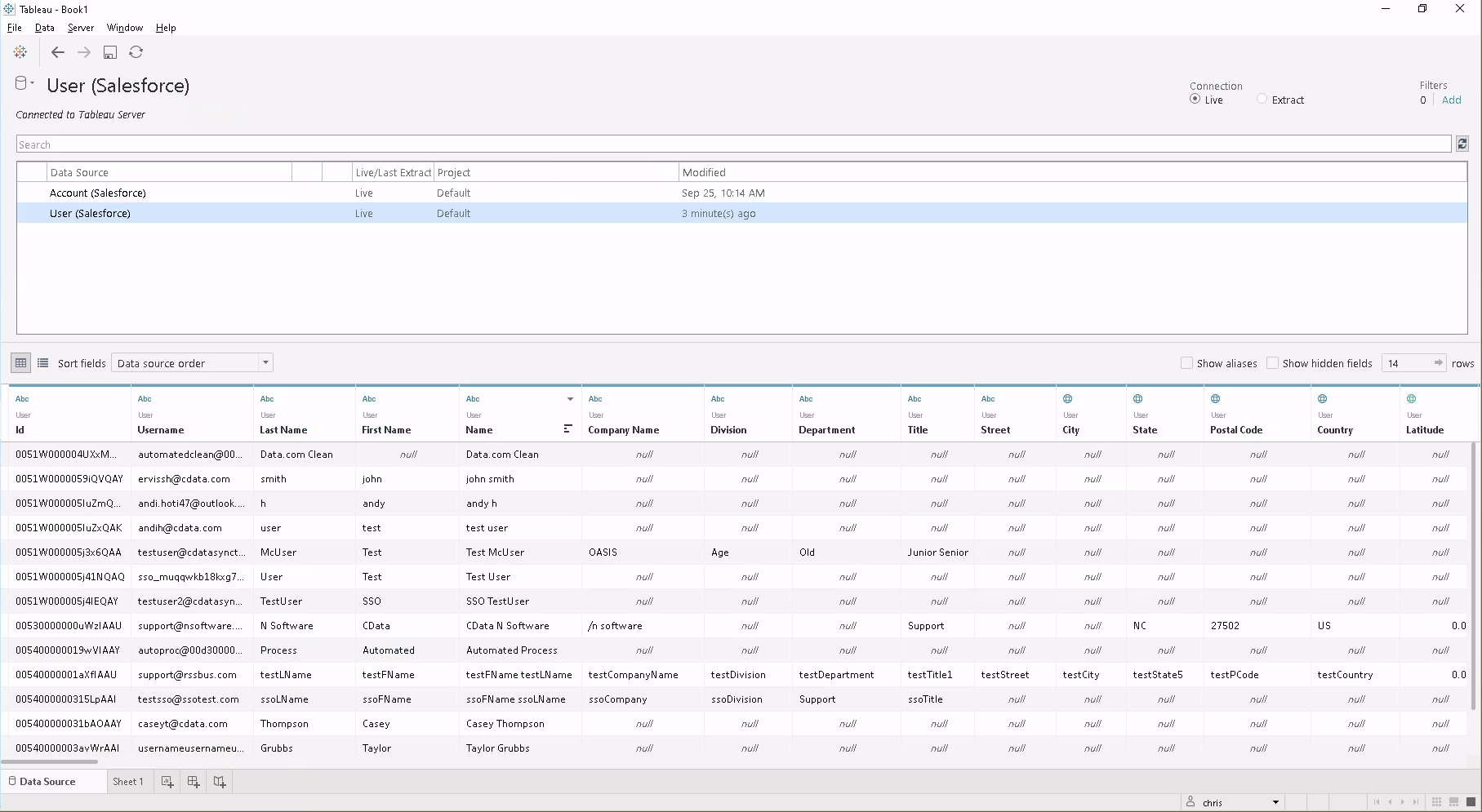
Note that workstation connected to the same server will be able to use the same source in Tableau Desktop, even if the driver isn't installed there. Also, workbooks created directly on Tableau Server (via the web interface) can use this source.
Visualize NetSuite Data in Tableau Server
With the Data Source published to Tableau Server, you are ready to visualize NetSuite data.
- Login to your Tableau Server instance.
- Connect to the remote source using the Search for Data -> Tableau Server in the Connect sidebar.
![Remote Data Source]()
- Click the published Data Source.
- Click New Workbook.
- In the workbook, NetSuite fields are listed as Dimensions and Measures, depending on the data type. The CData JDBC Driver discovers data types automatically, allowing you to leverage the powerful data processing and visualization features of Tableau.
- Drag a field from the Dimensions or Measures area to Rows or Columns. Tableau creates column or row headers.
- Select one of the chart types from the Show Me tab. Tableau displays the chart type that you selected.
![Visualizing live NetSuite data in Tableau Server]()
Using the CData JDBC Driver for NetSuite with Tableau Server, you can easily create robust visualizations and reports on NetSuite data. Download a free, 30-day trial and get started today.

